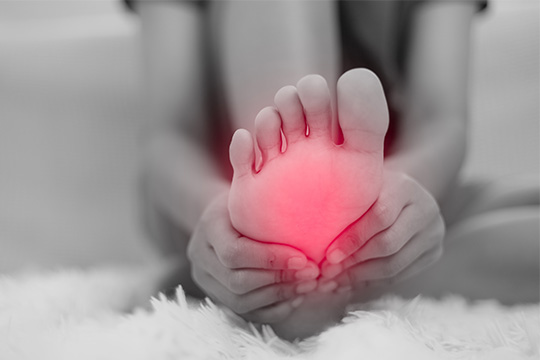Home > Disease and Treatments > Understanding Drug Overdose: What You Need to Know
Understanding Drug Overdose: What You Need to Know
The word "overdose" implies there's a known, safe dosage for a drug. It's not just about taking “too much”, it’s about exceeding what is medically considered safe, whether accidentally or intentionally. This is why the term "overdose" is typically reserved for drugs, substances specifically created to have targeted effects on the body at carefully measured doses.
While we often associate overdose with illicit drug abuse or emergencies, the reality is far more nuanced. Overdose can happen in everyday situations, especially when medications are misused or misunderstood. It can occur in infants, toddlers, adults, and elderly people, often with common medications like paracetamol (acetaminophen).
This post breaks down what you need to know about drug overdoses, how they happen, and how to prevent them, especially among vulnerable groups like young children and older adults.
What Is a Drug Overdose?
A drug overdose happens when someone takes more than the medically recommended dose of a substance, causing toxic effects in the body. Overdoses can be:
- Accidental – due to miscalculation, misunderstanding labels, or combining medications
- Intentional – as a form of self-harm or misuse
- Chronic – due to gradually accumulating too much over time
Why the Term “Overdose” Matters
The term “overdose” is used because drugs have defined therapeutic ranges, the amount needed to be effective without causing harm. Crossing that threshold, even slightly or unintentionally, can lead to health complications.
For example, paracetamol (acetaminophen) is one of the most widely used and trusted medications, but it’s also one of the leading causes of drug overdose globally. Why? Because people assume it’s harmless and don’t realize the risks of exceeding the recommended dose.
Drug Overdose in Infants and Toddlers
Children are especially susceptible to overdose due to their smaller size and reliance on adults for correct dosing. Common causes include:
1. Incorrect Dosing of Syrups (e.g., Paracetamol 250mg/5ml)
Using kitchen spoons instead of a dosing syringe can lead to under- or overdosing. A small error in a small child can have serious consequences.
2. Miscalculating Dosage Frequency
Paracetamol should be given every 4–6 hours, but caregivers may forget when the last dose was given, especially during sleepless nights.
3. Combining Medications with the Same Ingredient
Giving a child both a fever syrup and a cough syrup, both containing paracetamol, can double the dose without realizing.
4. Confusion Between Formulations
Paracetamol syrups come in different concentrations (e.g., 120mg/5ml and 250mg/5ml). Using the wrong one for your child’s age or weight can lead to an overdose.
Drug Overdose in the Elderly
Older adults are also at high risk for overdose, but for different reasons:
1. Polypharmacy (Taking Multiple Medications)
Elders often take several medications for chronic conditions. Some drugs may interact, or have overlapping ingredients, increasing the risk of overdose or side effects.
2. Memory Issues
Cognitive decline or memory problems may cause older adults to forget they’ve already taken a dose, and take it again.
3. Slower Metabolism
As we age, the liver and kidneys become less efficient at processing drugs. Even a “normal” dose may linger longer in the system, leading to toxicity over time.
4. Vision or Dexterity Issues
Difficulty reading small print or handling tiny tablets can result in accidental mis-dosing.
Common Symptoms of Overdose
Symptoms vary by drug, but common signs include:
- Nausea, vomiting
- Drowsiness or confusion
- Slow or irregular heartbeat
- Difficulty breathing
- Abdominal pain (especially with paracetamol overdose)
- Jaundice (yellowing of skin or eyes)
- Seizures or unconsciousness in severe cases
Prevention Tips for All Ages
Whether you're giving medicine to a child or managing your own prescriptions as a senior, vigilance is key:
For Infants and Children:
- Always use proper dosing tools (syringe, not spoon).
- Record doses and times to avoid repetition.
- Read labels for duplicate ingredients.
- Consult your pediatrician to determine age and weight-specific doses.
For Elderly Adults:
- Keep a medication chart or pill organizer.
- Review medications regularly with your doctor or pharmacist.
- Watch for interactions and overlapping ingredients.
- Ensure instructions are clearly labeled and easy to read.
- Seek help if there are memory or vision issues.
When to Seek Medical Help
If you suspect an overdose, don’t wait. Call emergency services (in India call 108 or 112) or go to the nearest hospital. In cases like paracetamol overdose, early treatment with antidotes (like NAC) can prevent serious liver damage if started within hours.
In conclusion, drug overdose is not limited to reckless behavior or illicit drug use. It can happen at home, with common medications, in the most loving households, especially when dealing with children or elderly family members.
Understanding what constitutes a “safe dose” and knowing how easy it is to exceed it, is the first step toward prevention.
Always double-check. Always ask questions. Always measure carefully.
Because when it comes to medicine, the difference between healing and harm is often just a few milliliters.
Appointments must be made 24 hours in advance.
Book an AppointmentRECENT BLOGS

Cardiovascular disease remains the leading cause of mortality worldwide, accounting for ne...
Read More
Headaches are among the most common ailments people experience, but not all headaches are ...
Read More
Living with diabetes means taking extra care of your health and one of the most important ...
Read More
